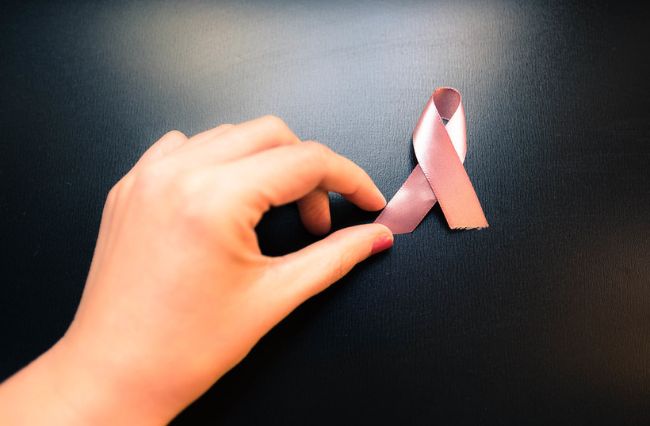Eight years ago, Jenny Rice was diagnosed with breast cancer after doing a self-examination. Fortunately, it was found early and surgically removed. She was told the chances of recurrence were very low. Still, standard medical procedures for breast cancer meant she then had to undergo radiotherapy five days a week, for six weeks. Rice said the experience was exhausting and the treatment was always on her mind, taking a toll on her mental state.
“It made me feel really tired. And your mindset, like you just couldn’t sort of concentrate on other things because you’re always thinking, ‘jeez, is this doing the job?” she told upstart.
As well as fatigue, radiation can have several physical side effects. Rice experienced skin changes and painful blistering after the first few sessions, which took a long time to heal. She also said that radiotherapy become an inconvenience to her everyday life.
“Sometimes the machinery broke down. So, you would have to go to another clinic for it, or then just not have it,” she said.
“I just went on the train each day. But then that turned into not just having the radiotherapy for 10 minutes – it was sort of a whole day then.”
But now there may be hope for the thousands of Australians diagnosed with breast cancer every year, with a trial exploring new ways to manage the disease.
Professor Bruce Mann is a breast cancer surgeon and the Director of research at Breast Cancer Trials (BCT). He said that there has been a general rule with breast cancer management that no matter how early you find it, there’s a chance the cancer has spread elsewhere. This means radiotherapy is required.
Over the years, mammography screening has resulted in cancers being found at an earlier stage. It would have made sense to think that women who could safely avoid radiation would have been identified from mammography screening, but so far there’s been no luck.
“The risk of recurrence, if they have excision [surgically removed tumours] without radiation at 10 years, is about 10 percent. Whereas if everyone gets radiation, it’s more like two percent. And because of that, everyone’s advice is to have radiation,” Professor Mann told upstart.
Professor Mann is hoping that this will no longer be the case. Between 2011 and 2019, BCT conducted a trial known as PROSPECT. Led by Professor Mann, the trial tested whether MRI screening could be used on women with early breast cancer, where the cancer is small and only found in the breast tissue or lymph nodes.
“If you do a MRI and there are not any additional cancers and it’s clear… those women should not need radiation, and that’s what the PROSPECT trial was,” he said.
During the trial, 440 women had an MRI scan, and 11 percent of those women were found to have an additional unsuspected area of cancer or pre-cancer that was later treated. As a result, those women weren’t eligible for the main study, and another 150 were also excluded due to other reasons. This left 201 women to participate in the study, all of whom were treated without radiation. When the hundredth woman from the trial reached five years of follow-up appointments, the results of the study were analysed.
“What we found is that the rate of local recurrence at that stage was one percent, whereas all other studies would suggest it would be at least four percent by then, if not higher,” Professor Mann said.
“Then the other aspect, which wasn’t the main focus of the study… we found additional areas of cancer in 11 percent. They were all treated.”
There was only one case where the cancer came back after being surgically treated, known as metastasis or stage four. And as it turned out, the recurrence was unrelated to the cancer they originally treated.
In other words, 99 percent of patients that didn’t receive radiotherapy as part of the trial had no reoccurrence in their breast, results that Professor Mann said were completely unexpected.
“By now we would have expected maybe five to 10 [percent of recurrences], you know, something like that,” he said.
“Just the possibility that we might be improving outcomes already is good, but we might be improving even more and really being able to tell women they’re cured… we’re pretty excited.”
In addition to these outcomes, the PROSPECT trial’s method of breast cancer treatment is more cost-effective when compared to radiation, saving approximately $2,700 per patient. Radiation also averages at least 15 visits per patient, compared to patients in the trial who only had to do two MRI scans over 18 months.
Rice didn’t take part in the trial, but she was excited to hear about the findings and the potential they hold for women in the future battling breast cancer.
“Having gone through it, I wish I had been offered it… I think it’s just great to hear,” she said.
“If I was unfortunate enough for it to happen again to me, and not expecting to have to go through the radiotherapy like five days a week for six weeks, that would be pleasing to know. To know that the medical space is always wanting to improve stuff and make things better for people, it’s really good.”
The final analysis of the PROSPECT trial will commence in 2026 when the hundredth patient reaches 10 years of follow-up appointments. While this study was based in Melbourne, BCT will be taking the trial overseas to see if it can be replicated in other countries.
Article: Samantha Smith is a third-year Bachelor of Media and Communications (sports journalism) student at La Trobe University. You can follow her at @ssamanthasmith5.
Photo: Female hand holding breast cancer awareness ribbon by Marco Verch available HERE and used under a Creative Commons license. This image has been modified.







